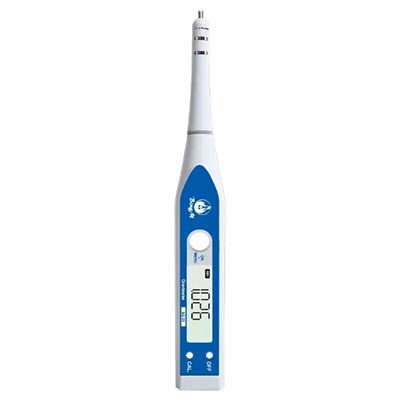A salinometer is used to quickly determine the concentration or refractive index of the weight percentage of salt-containing (sodium chloride) solutions. It is widely used in salt production, food, beverage, and other industrial sectors, as well as in agricultural production and scientific research. Due to simple operation, users can quickly read the salt concentration or seawater specific gravity, which can be applied to concentration management of seawater used in oceans, fisheries, farms, seawater or artificial seawater used in aquariums, saltwater used for storing fish, etc. Next, SISCO will introduce to you how to use a salinity meter.
Because light refracts when it enters from one medium into another, and the ratio of the sine of the incident angle is constant, this ratio is called the refractive index. Using the fact that the content of soluble substances in the salt solution is proportional to the refractive index under normal circumstances, the refractive index of the salt solution can be measured, so that the salinometer/refractometer can calculate the concentration of salt.
Salinometer meter using steps
- Power on and warm up
Before starting the measurement, you need to turn on the power of the salinity meter and let the instrument warm up for some time. The warm-up time is generally about 30 minutes to ensure that the instrument can reach a stable measurement state. - Calibration
Before formal measurement, a salinometer calibration operation is required. Place the electrode of the salinometer into the standard solution and adjust the calibration knob until the reading on the display is consistent with the salinity value of the standard solution. This ensures the accuracy of the measurement results.
- Sampling and measurement
Pour the water sample to be measured into the measuring container, and then place the electrode of the salinometer into the water sample to be measured. Be careful not to touch the bottom or side of the container with the electrode to avoid affecting the measurement results. Wait a few seconds until the reading on the display stabilizes. Read the value on the display screen, which is the salinity value of the water sample to be measured. - Read the value
During the measurement process, you need to pay attention to the changes in the values on the display screen. When the value becomes stable, the measurement result can be read. At the same time, it is necessary to pay attention to the reading unit and accuracy of the instrument to better understand the measurement results. - Clean the electrodes
After the measurement is completed, the electrode surface needs to be cleaned. Remove the electrode from the water sample to be measured. Rinse it with clean water and dry it with a soft cloth. Avoid using cleaning agents containing chemicals to avoid damage to the electrodes. After cleaning is completed, store the electrode properly for next use.
The cleaning steps for the salinometer probe are as follows:
Prepare cleaning tools and materials, including cleaning agents, soft cloth, clean water, etc.
Remove the probe from the salinometer and place it in a container.
Pour the cleaning agent into the container. Then soak the probe in the cleaning agent for about 5 to 10 minutes.
Gently wipe the probe surface with a soft cloth to remove dirt and impurities.
Take out the probe, rinse it with clean water, and then wipe it dry with a clean cloth.
Reinstall the probe to the salinometer, making sure the installation is correct and secure.
When cleaning the salinometer probe, you need to pay attention to the following points:
Do not use strong acid or alkali cleaning agents to avoid damaging the probe surface or affecting measurement accuracy.
During the cleaning process, do not use excessive force or use a rough cloth to wipe the probe surface to avoid scratching the surface or damaging the probe.
After cleaning, dry the probe thoroughly before reinstalling it on the salinometer to avoid affecting the measurement results. - Turn off the power
After completing the measurement, the salinometer needs to be powered off. At the same time, the electrodes also need to be properly stored for next use. When the salinometer is not used for a long period, both the instrument and the electrodes need to be properly maintained and stored.
When using a salinometer for measurement, you need to pay attention to the following points:
Before use, you need to understand the operating instructions and precautions of the instrument to avoid misoperation that may lead to inaccurate measurement results or damage to the instrument.
During the measurement process, the measurement container needs to be kept clean and dry to avoid affecting the measurement results. At the same time, it is also necessary to avoid exposing the instrument to harsh environments such as high temperature and humidity.
During use, you need to pay attention to the display, screen, and numerical changes of the instrument. Ensure the accuracy and reliability of measurement results.

